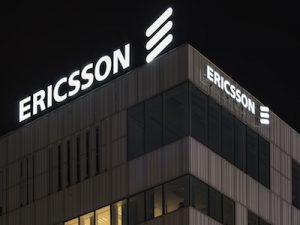On Monday, July 30th, Swedish multinational telecommunications company Ericsson and South Korean consumer electronics firm LG Electronics announced that they had entered into a global licensing agreement to cross-license patent portfolios held by both companies. The patents in these portfolios include standard-essential patents (SEPs) related to various cellular technologies, including those related to second generation (2G), third generation (3G) and fourth generation (4G) cellular standards.
According to mobile subscriber statistics published by the online statistics portal Statista.com, these cellular standards will be increasingly utilized by billions of consumers around the world in the years to come. 2G technology, 2G standards, which were first commercially launched in 1991, will see a diminished user base in the years to come, from a peak of 3.96 billion users in 2010 down to an expected 1.5 billion users in 2020. 3G cellular networks, first introduced in 1998, have seen steady subscriber growth up from 1.15 billion users in 2010 to an expected 4.29 billion users in 2020. 4G networks were introduced in 2008 and their subscriber bases will likely grow at a much faster rate, up from only 1.18 million users in 2010 to a forecasted 1.8 billion users in 2020.
“We are very pleased with this new agreement with LG,” said Gustav Brismark, Ericsson’s Chief Intellectual Property Officer, following the recent global cross-license agreement with LG. “It will allow us to focus on developing new technology for the global market and add to our already industry-leading patent portfolio. The agreement confirms the value of our patent portfolio and validates our ability to license it on FRAND terms and conditions.”
Analysis of SEP portfolios in the 2G, 3G and 4G cellular spaces shows that Ericsson is a major player in this field. An article published online this March by IAM shows that Ericsson holds in excess of 2,700 SEPs related to these various mobile standards as determined by U.S. district courts, including 325 SEPs for 2G technology, 953 SEPs related to 3G and another 1,481 SEPs for 4G technology. These totals are less than the more than 3,300 patents which Ericsson considers as part of its 2G/3G/4G SEP portfolio, according to the IAM analysis. IAM also pegged the starting point for SEP royalty rates paid by 3G and 4G manufacturers at 5 percent for combined 3G SEPs and 9 percent for combined 4G SEPs.
The recent licensing agreement with LG could help improve Ericsson’s licensing revenues, which have lagged slightly in recent quarters. According to Ericsson’s earnings report for the second quarter of 2018, the baseline annual revenues earned by the company for its intellectual property licensing business are 7 billion Swedish krona (SEK), or approximately $788.8 million USD. Ericsson did report a year-over-year decline in IP licensing revenues for the second quarter down to 1.8 billion SEK ($202.9 million USD). Licensing revenues for Ericsson’s networks segment made up the bulk of the company’s IP licensing for the second quarter, totalling 1.5 billion SEK ($169.1 million USD). Ericsson’s total IPR licensing revenues for the first half of 2018 reached 3.67 billion SEK ($413.6 million USD), a decline from the 4.1 billion SEK ($462 million USD) earned by Ericsson for IP licensing during the first half of 2017.
Ericsson’s licensing revenues have decreased at the same time that the company has spent more money on research and development activities over the past year. During 2018’s second quarter, Ericsson spent 9.8 billion SEK ($1.1 billion USD) on R&D, a 17 percent increase over the 8.4 billion SEK ($947 million) spent by the company during 2017’s second quarter.
LG Electronics has also experienced a recent downturn in sales for its mobile communications division which could be a reason behind that company’s decision to enter into the cross-licensing agreement with Ericsson. LG’s earnings statement for 2018’s second quarter shows that the company’s sales in its mobile communications division dipped to 2,072 billion Korean won (KRW), or about $1.83 billion USD. That number represents a 19.2 percent decline over LG’s mobile revenues for the second quarter of 2017 of 2,567 Korean won ($2.276 billion USD). LG attributes the sales decline to a stagnating market for smartphones as well as decreasing sales of mid- to low-end smartphones in North America and Latin America.

![[IPWatchdog Logo]](https://ipwatchdog.com/wp-content/themes/IPWatchdog%20-%202023/assets/images/temp/logo-small@2x.png)


![[[Advertisement]]](https://ipwatchdog.com/wp-content/uploads/2024/04/Patent-Litigation-Masters-2024-banner-early-bird-ends-Apr-21-last-chance-938x313-1.jpeg)
![[Advertisement]](https://ipwatchdog.com/wp-content/uploads/2024/04/Patent-Litigation-Masters-2024-sidebar-early-bird-ends-Apr-21-last-chance-700x500-1.jpg)

![[Advertisement]](https://ipwatchdog.com/wp-content/uploads/2021/12/WEBINAR-336-x-280-px.png)
![[Advertisement]](https://ipwatchdog.com/wp-content/uploads/2021/12/2021-Patent-Practice-on-Demand-recorded-Feb-2021-336-x-280.jpg)
![[Advertisement]](https://ipwatchdog.com/wp-content/uploads/2021/12/Ad-4-The-Invent-Patent-System™.png)







Join the Discussion
No comments yet.